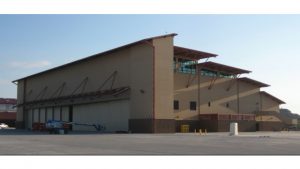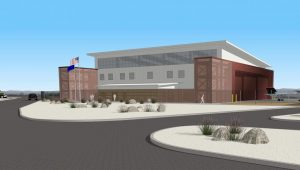2016-07-07 By Robbin Laird
When I visited Williamtown Air Base in Australia last March, I was given a tour to the bed down of the F-35 at the airbase and the shaping really of a fifth generation infrastructure for the evolution of the Royal Australian Air Force.
The challenge put by the head of the RAAF is rather simple: “We do not want to be a fourth generation air force operating a fifth generation force.”
The same approach is being taken by the RAF and the USAF in the convergent efforts to stand up the F-35 at RAF Marham and at RAF Lakenheath.
Prior to my April trip to the UK, I wrote a piece which highlighted the challenge.
The question remains with regard to how the RAF and the USAF will leverage the close proximity of their aircraft to shape the most efficient and effective logistics support system to support and sustain the F-35 air combat force?
With the substantial similarity between the two aircraft, significant joint support opportunities clearly exist.
The challenge will be to make them happen.
During that trip and during my visit to the European Air Group working group on 4th-5th generation integration, I met Lt. Col. Tim Trimmell who is based at RAF Mildenhall and works on UK-USAF issues within US Air Forces Europe.
We discussed briefly some of the USAF thinking in terms of how to leverage the strategic opportunity, but agreed to meet later at RAF Lakenheath to discuss with the USAF team the thinking and the way ahead.
In the interim, I was able to meet with Air Commodore Smyth, the senior RAF officer responsible for the standup of the F-35 in the RAF and got his very clear statement of the approach, the challenges and the opportunities.
Then this June, I was able to go to RAF Lakenheath and after the discussion with Col. Novotny, the 48th Wing Commander, I was able to sit down with Lt. Col. Trimmell and with Lt. Col. Vause who is the 48th Wing F-35 program integration officer and to discuss the way ahead.
Lt. Col. Vause comes at the task with a strong background with regard to evolving integrated operations having blended his F-15C experience in the Pacific with his recent experience in South Korea working integration with the Army Air Defense Systems, in shaping the evolving offensive-defensive enterprise, something the F-35 was built to become a key lynchpin of.
The entire approach the USAF is working with the RAF is to shape a 21st century approach to building an infrastructure which more tightly integrates training with operations with maintenance.
https://www.wbdg.org/ccb/AF/AFDG/squadronoperations.pdf
And the campuses being set up on each base reflects this with Marham having an Integrated Training Center with Lakenheath having the distinct possibility of leveraging this capability as well.
According to the two USAF officers, the concept is to have the maintenance and operations centers co-located within a campus like setting to allow for rapid combat learning and support for the data rich aircraft which the F-35 is.
Last December, USAFE and the RAF established a joint working group.
This group has met three times to date and will brief initial findings to senior RAF and USAFE leadership later this summer.

This will require a can do attitude.
“Let’s not talk about what we can or we can’t do.
What’s right to do?
Everything can be changed.
And if it makes sense for us to operate in a different manner, we change the written guidance to support that as long as the leadership is in full agreement.
We will have to break glass.
Applying yesterday’s procedures and policies to this joint effort makes little sense.”
The beddown of F-35s at Lakenheath is part of an overall restructuring of USAF infrastructure in Europe, including the closing of RAF Mildenhall.
As basing is changed, obviously decisions will have to be made about relocation or location of aircraft, with the F-35 for the USAF being the new entry into the basing picture.
But it is part of the moving landscape of USAF infrastructure in Europe being shaped for the decade ahead.
Both F-15E squadrons will remain at RAF Lakenheath with a clear opportunity to work the fifth generation enabled piece of air warfare with the aircraft deployed to the base on a regular basis.
An example of the new infrastructure are the new F-35 hangars, designed in part for its tron warfare capabilities
In fact, a completely overlooked efficiency in the F-35 program is the common hangar.
By leveraging a common design and improving on that common design as the infrastructure is built out significant efficiencies can be achieved as well as cost savings.
https://www.sldinfo.com/building-f-35-hangars/
https://www.sldinfo.com/hangar-80-at-yuma-air-station-a-building-block-for-f-35-global-presence/
And one can see this process in operation at RAF Lakenheath.
Earlier this year, the RAF Lakenheath team went to Luke AFB to look at their latest build out of the common hangar as well as working integration of the ops and maintenance side of the F-35 squadron.

And the team returned with the Luke plans with the clear intention to replicate them at Lakenheath and to set up a similar six –bay hangar facility along with a similar simulation structure as well.
“We are not seeking to reinvent the wheel.
We are the fifth base to set up the F-35A and we are drawing upon the best practices in building the common hangar, but taking the latest variant with whatever tested improvements are being put in place.”
In short, the RAF and the USAF are taking up the challenge and seeking to shape a strategic advantage from flying the same fighter in the same airspace.
And to underscore again, the bilateral working group is looking at the whole gamut of relevant issues.
How do we operationally train and how do we operationally engage and how do we link up our simulators and synthetic training?
How do we work joint logistics, storage and maintenance training?
They’re going to have a lot of capability at RAF Marham with regard to training that RAF Lakenheath will not have, especially with regard to the maintenance training devices that the U.S. Air Force isn’t going to buy.
Why wouldn’t you seek to work effectively together?
Editor’s Note: According to an article published by the USAF early last year when the decision was announced with regard to the European F-35 bed down:
Jan. 08, 2015 — Two operational squadrons of U.S. Air Force F-35 Lightning II joint strike fighter jets will be permanently stationed at the Royal Air Force Lakenheath facility in the United Kingdom starting in 2020, Defense Department officials announced today.
A considered and deliberative process led to RAF Lakenheath’s selection as the first European base for U.S. F-35s, DoD officials said.
“This decision is just the latest example of the special relationship between the United States and the United Kingdom,” Derek Chollet, assistant secretary of defense for international affairs, said today. “The presence of U.S. F-35s at Lakenheath will lead to new possibilities for collaboration with the United Kingdom, such as the potential for greater training and wider support opportunities.”
The announcement was made at the same time officials released the department’s plans for European Infrastructure Consolidation, a two-year effort designed to ensure long-term efficiency and effectiveness of the U.S. presence in Europe.
Enhancing Readiness With Reduced Funding
The EIC calls for the return of 15 sites to their host nations in Europe. Divestiture of RAF Mildenhall represents the largest reduction in U.S. personnel among the sites, but it will also pave the way for the F-35 units at RAF Lakenheath, Pentagon officials said. DoD officials expect a net decrease of roughly 2,000 U.S. service members and civilians in the United Kingdom over the next several years.
About 3,200 Americans will be relocated from RAF Mildenhall, and that will be offset by the addition of about 1,200 personnel who will be permanently assigned to the F-35 squadrons at Lakenheath, officials noted.
“Taken together, these decisions on our force presence in Europe will enhance our operational readiness and mission posture at reduced funding levels, all toward the objective of maintaining a strong transatlantic alliance and meeting our common security interests,” Chollet said.
http://www.defense.gov/News-Article-View/Article/603888
Also, see the following:
https://www.sldinfo.com/preparing-for-synergy-the-coming-of-the-f-35-to-raf-lakenheath/

